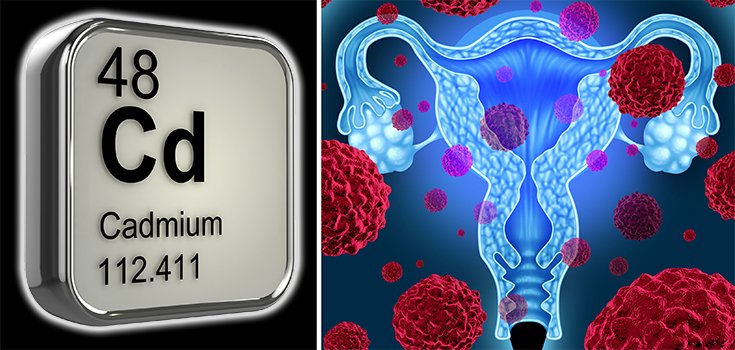Study: Excessive Cadmium Linked to Higher Risk of Endometrial Cancer

Women who have excessive cadmium in their bodies may be at increased risk for developing endometrial cancer, researchers from the University of Missouri reported in a recent study.
Accounting for 92% of cancers of the uterus, endometrial cancer, or uterine cancer, is the most common type of reproductive cancer in women in the United States. The disease is caused by cells in the endometrium growing out of control.
Cadmium is a “highly persistent” toxic metal which mimics estrogen in the body. According to lead author Jane McElroy, an associate professor in the University of Missouri Medical School’s Department of Family and Community Medicine, and a team of researchers, cadmium builds up in the body over time. It has been linked to “a variety of adverse health effects,” including kidney damage, calcium imbalance, and an increased risk of pancreatic, breast, and endometrial cancer.
Apart from exposure on the job, excess cadmium usually enters the body through 1 of 2 ways: by eating foods that contain the metal, and by smoking tobacco. Smoking tobacco is cadmium’s second port of entry to the body due to the fact that tobacco plants absorb it from the soil. In urine tests, heavy smokers were found to contain twice as much cadmium as non-smokers.’
Related: High Levels of Heavy Metals Found in Popular Chocolate Brands
Cadmium & Cancers
It’s logical to assume cadmium fuels hormone-dependent cancers because the toxic metal has similar effects to that of the female hormone, estrogen.
McElroy explained:
“Endometrial cancer has been associated with estrogen exposure. Because cadmium mimics estrogen, it may lead to an increased growth of the endometrium, contributing to an increased risk of endometrial cancer.”
However, it was the lack of information about the link that led researchers to dig deeper.
Additionally, past studies have suggested that even low levels of cadmium may significantly shorten the protective caps of DNA on the ends of chromosomes, called telomeres. [2]
Telomeres are associated with aging, and shortened telomeres may increase the risk for cardiovascular disease, diabetes, various age-related conditions, and cancer.
Studying the Link
Researchers gathered data from the cancer registries in Arkansas, Iowa, and Missouri to identify cases of endometrial cancer. Participants included 631 women with a history of endometrial cancer, and 879 women with no history of the disease who served as a control group. [3]
The women completed a 200-question survey about risk factors potentially associated with endometrial cancer. Once the questionnaires were completed, the participants were asked to collect their own urine and saliva samples for the researchers, so they could analyze them for cadmium.
McElroy said:
“When comparing the cadmium levels of the individuals with endometrial cancer to the control group, we found a statistically significant increased risk of the cancer associated with a woman’s cadmium levels. We found the rate of endometrial cancer incidence increased by 22% in individuals with increased cadmium levels.”
More research is necessary to determine how strong the link is between excess cadmium and endometrial cancer, but based on the limited information available, there are some things you can do to limit your cadmium exposure.
McElroy explained:
“We all have cadmium present in our kidneys and livers, but smoking has been shown to more than double a person’s cadmium exposure.
Also, we recommend being attentive to your diet, as certain foods such as shellfish, kidney and liver can contain high levels of cadmium. You don’t necessarily need to cut these from your diet, but eat them in moderation. This is especially true if women have a predisposition to endometrial cancer, such as a family history, diabetes or obesity.”
Moreover, studies have shown that quercetin, an antioxidant compound found in fruits and vegetables like onions and apples, may protect the body against cadmium exposure, while cilantro and chlorella can help the body detox from the substance.
Sources:
[2] Prevention
[3] Science Daily
